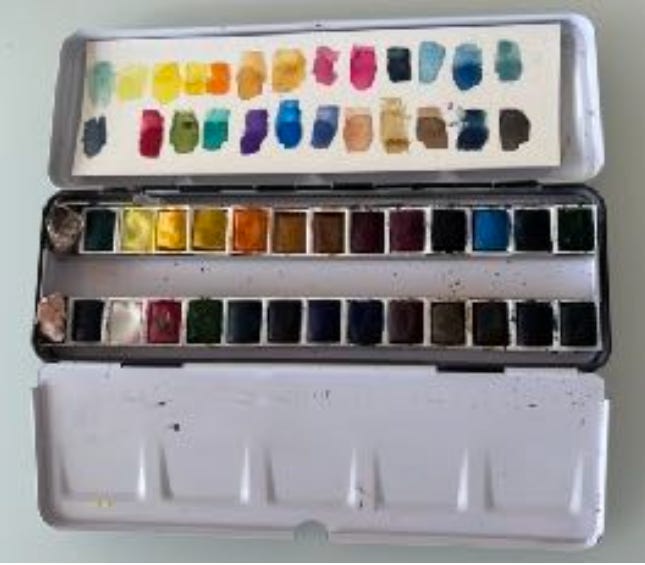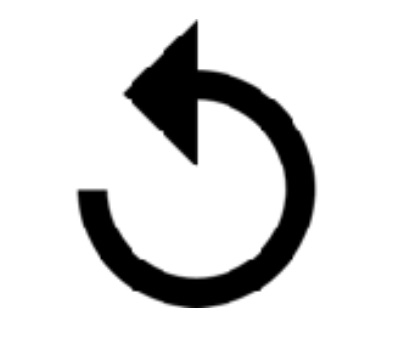Emanuel Derman (ED) started off with WITI with the excellent Japan edition. He grew up in Cape Town, South Africa, and came to Columbia University in New York to study for a PhD in physics. Since then he’s lived mostly in Manhattan. His memoir is My Life As A Quant. - Colin (CJN)
Emanuel here. Recently I signed up for some watercolor classes. In each session there was a model we were supposed to first draw first and then paint. The instructor had the model pose (usually with arms and legs entwined in some often elegant but hard-to-draw position). The class began with five two-minute poses and eventually culminated with a 40-minute pose (2 x 20 minutes in the same position, actually, with tape on the floor so that the model could recreate the position for the final 20 minutes after a short break.)
Now I can draw what I consider to be passably for a non-artist adult, but my instinct is to draw like a xerox machine or document scanner, starting from the head and moving down slice by slice. The big drawback is that in two minutes or even ten, you may never get to the body or the feet. Furthermore, if you do, the proportions are likely to be wrong — head too small or large, for example, or arms disproportionate. So, learning to do a quick two-minute or ten-minute sketch forces you to get the proportions right first, with a quick rough form for the whole body and limbs, and then materialize the details later, which is, I guess, obviously the right way to proceed.
Though the instructor in the class wanted you to sketch the model first, and then add the watercolors, some skilled and talented students could enviably go directly to paint. But I sketched the model, and then used my set of Winsor and Newton Professional Watercolors in pans to add the color. I soon learned that I should use a very light hard pencil (4H) so that the watercolors would overlay and obscure the pencil.
Why is this interesting?
Because it’s so damn hard! A decent sketch becomes awful once I (try to) make it a color painting.
Watercolors are massively unforgiving. When you draw with a pencil, you can erase and go back. When you write, on paper or with a text editor, you can make changes. But when you put down watercolor, that’s pretty much it (1). You can’t fix it. It becomes a muddy mess. You have to learn the technique and become really good at the medium and the operations before you can get anywhere at all.
Of course this is true of any craft or art, even writing (2), but watercolors shoves that fact in your face. You have to master the medium before you can go onto the message. It might be a mistake to start with painting a model, and so I found a class that teaches “abstract watercolors” which lets you learn to paint without worrying so much about fidelity of some kind.
I have tried to dodge this dilemma by sometimes using Fresco, an app I have on my iPad. You can choose your Apple Pencil to convincingly represent the image of a pencil, a pen, charcoal, a brush with watercolors or oils or acrylic, or what have you. You can choose the degree to which the paint flows and mixes. You can press harder and get a more intense line. You can turn the pencil on its side and get a broader stroke. It’s pretty amazing. And greatest of all, everything you do is undoable via the undo button. You can keep undoing iteratively whenever something fails. And you can erase as well. And undo the erasure. Not to mention that you can open-pinch the canvas to enlarge it temporarily so that you can (try to) draw in great detail some feature you couldn’t get right when working on the actual size.
It feels like cheating to use Fresco, but artists I know tell me that nothing is cheating. So be it. If only everything in life were undo- and redo-able. (ED)
Less true of oil, acrylic, pastels, or even gouache
If you are old enough to have learned and use cursive handwriting, you might have noticed that your handwriting keeps changing and evolving even into your thirties. Handwriting must be very sophisticated neurologically.
—
Thanks for reading,
Noah (NRB) & Colin (CJN) & Emanuel (ED)
—
Why is this interesting? is a daily email from Noah Brier & Colin Nagy (and friends!) about interesting things. If you’ve enjoyed this edition, please consider forwarding it to a friend. If you’re reading it for the first time, consider subscribing.






Question for ED: Does using Fresco make you a better watercolorist in the actual medium?